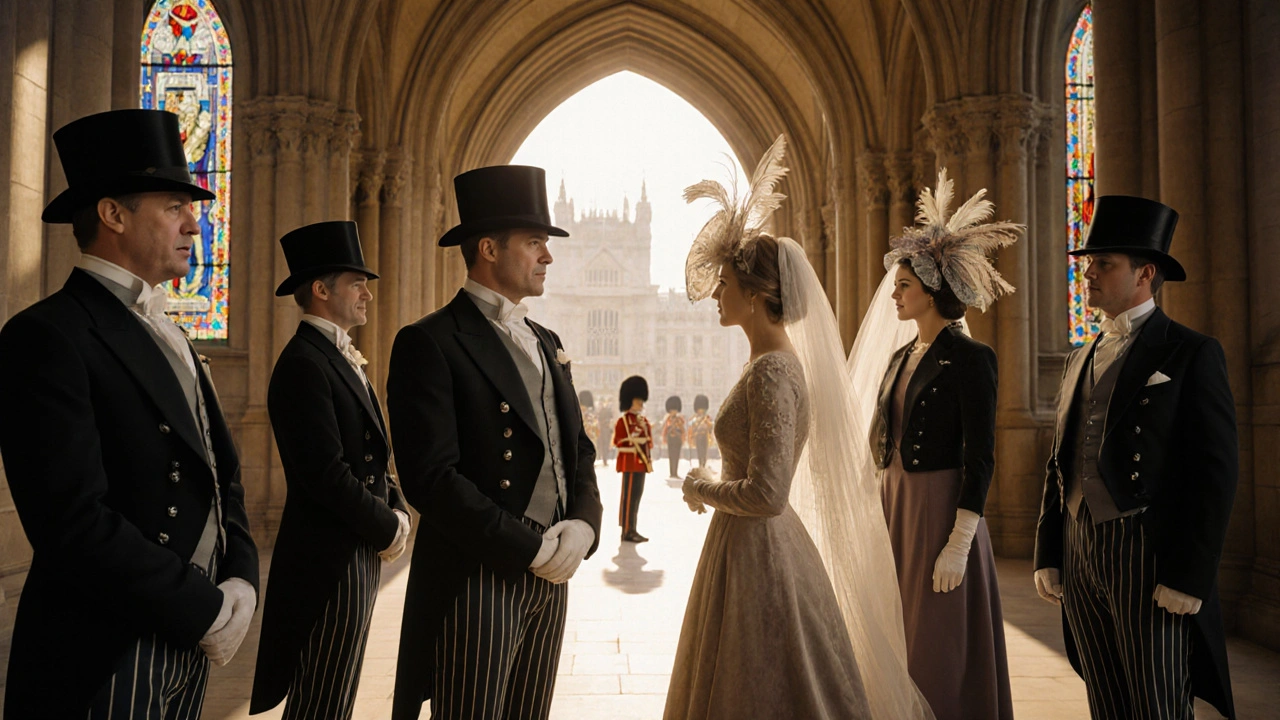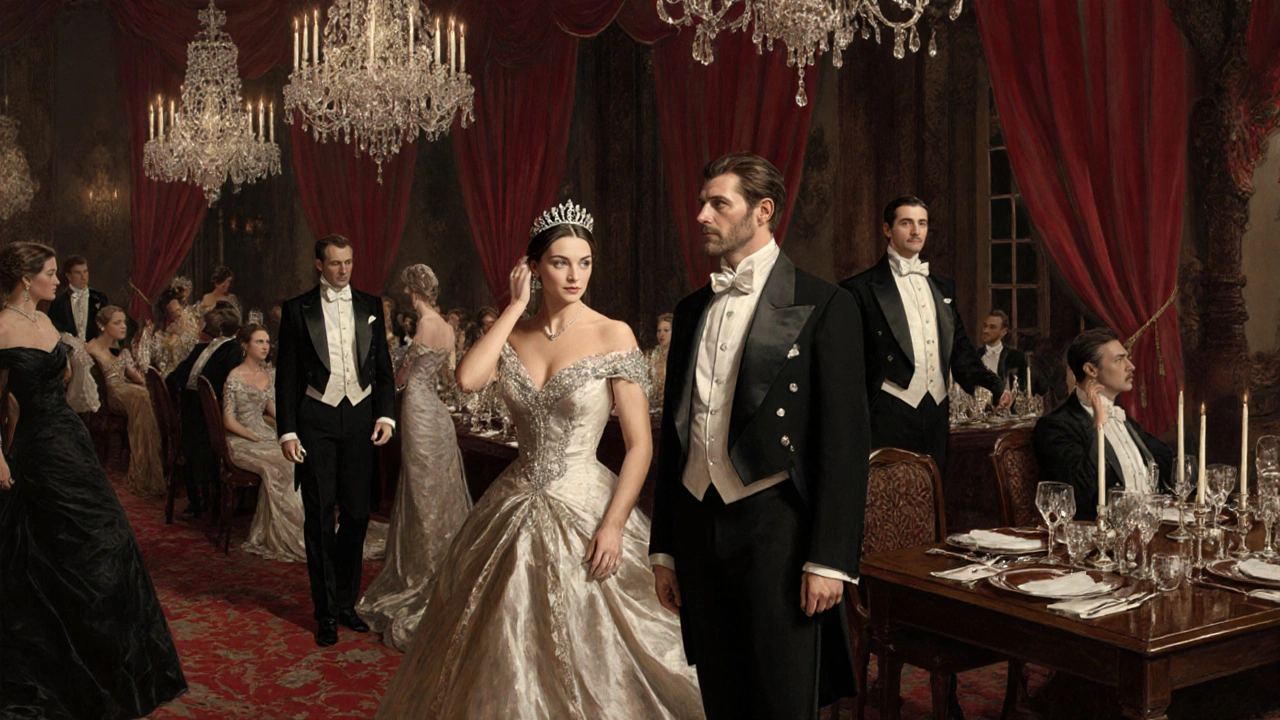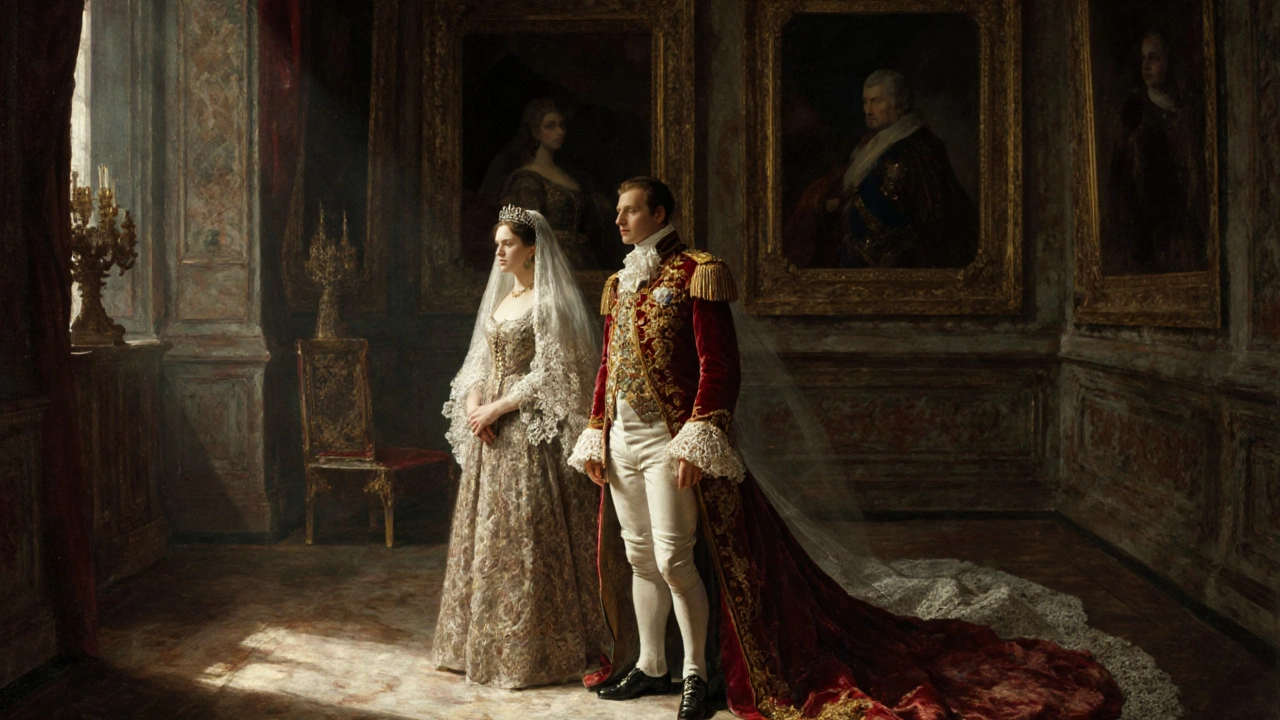
Walk into a royal wedding, a state opening of Parliament, or a traditional British funeral, and you’ll see something more than just fancy clothes. You’ll see centuries of rules, rank, and ritual stitched into every velvet lapel, every feathered hat, every diamond tiara. These aren’t costumes. They’re legal uniforms - worn by people who have to get them right, or risk looking like they don’t belong.
Why British Ceremonial Dress Still Matters
Britain doesn’t just wear its history. It wears it on its head, on its back, and sometimes even on its shoes. Unlike other countries that moved to suits and ties for everything, Britain kept its ceremonial codes alive - not out of stubbornness, but because they still serve a purpose. They signal status, role, and respect in a way that words can’t.
At the coronation of King Charles III in 2023, you saw peers in velvet robes with ermine trim, military officers in full dress uniforms with gold braid, and women in day dresses with tiaras that had been worn by queens since the 1800s. No one asked if it was ‘necessary.’ It was required. These aren’t fashion choices. They’re part of the constitution.
The Three Main Codes: Morning Dress, Evening Dress, and Court Dress
There are three official dress codes for state and ceremonial events in Britain, and they’re not optional for those who are invited to wear them.
Morning dress is for daytime events - royal weddings, Ascot, state funerals before 6 p.m. It’s not just a suit. It’s a specific outfit: a black or charcoal morning coat with tapered tails, striped trousers, a waistcoat (usually grey or buff), a white shirt with a wing collar, and a black silk cravat. The hat? A top hat. Not a fedora. Not a flat cap. A top hat. And it’s worn until the end of the ceremony.
Evening dress is for formal night events - state banquets, opera nights at the Royal Albert Hall, royal garden parties after sunset. For men, that’s a black tailcoat with satin lapels, white bow tie, white piqué waistcoat, and black dress pants with silk braid. For women, it’s a full-length evening gown - often with a tiara if they’re a peeress or royal family member. The tiara isn’t optional for women of royal blood. It’s part of their title.
Court dress is the most complex. It’s worn by men holding certain hereditary titles or offices - like judges, Lord Mayors, or peers who aren’t in the House of Lords. It’s a knee-length velvet coat with gold embroidery, lace cuffs, breeches, silk stockings, and buckled shoes. Women’s court dress is less common now, but when worn, it’s a full-length dress with a train, a lace veil, and a tiara. The last time a non-royal woman wore court dress at a levee was in 2010. It’s rare, but still on the books.
Hats: More Than Just Accessories
In Britain, a hat isn’t just something you wear to keep the rain off. It’s a signal. A top hat means you’re in morning dress. A cocked hat (also called a bicorne) is worn by military officers in full dress - think the Household Cavalry at Trooping the Colour. It’s stiff, black, and shaped like a flattened letter ‘V’.
For women, the rules are stricter. At royal events, hats must be worn during the day. No bare heads. Not even for celebrities. In 2018, a well-known American actress was turned away from a royal garden party because she wore a headband. Not a hat. A headband. The Queen’s staff didn’t make a fuss. They just didn’t let her in.
And then there’s the tiara. Tiaras aren’t for every woman. They’re for those with royal blood, married into royalty, or holding a peerage title. The Queen Mother’s favourite tiara, the Greville Tiara, was worn by her daughter, Queen Elizabeth II, and later by Princess Anne and Kate Middleton. It’s not just jewelry. It’s a symbol of position. You don’t borrow a tiara unless you’re allowed to wear it.

Tails and Trousers: The Subtle Rules
Even the cut of your trousers matters. In morning dress, the stripes on the trousers must be exactly 1.5 inches wide - no more, no less. The waistcoat must match the trousers in fabric, not just color. And the tie? Never a necktie. Always a cravat. Tied by hand. No pre-tied versions allowed.
For evening dress, the tailcoat must have two tails that hang below the knee. No exceptions. A single-tailed coat? That’s a dinner jacket - for private parties, not state occasions. And the bow tie? Must be white silk. No black, no patterned, no silk with a sheen. Just plain, matte white.
Women’s dresses must cover the shoulders. No strapless gowns at royal events. No bare backs. Even at the most modern ceremonies, modesty is part of the protocol. The Duchess of Cambridge has worn long sleeves to coronation events. It’s not a fashion statement. It’s a rule.
Who Gets to Wear What - And Who Doesn’t
Not everyone gets to wear these outfits. You don’t just buy a tailcoat and show up. You have to be invited - and invited with a dress code attached.
Members of the House of Lords wear their robes on state occasions. Peers wear crimson velvet with ermine trim. Life peers wear the same, but without the fur. Barons and baronesses wear simpler versions. Commoners? They wear morning or evening dress - if they’re invited. No one gets to wear court dress unless they’ve inherited the title or been appointed to a specific office.
Foreign dignitaries? They wear their own national dress - but only if they’ve been given permission. In 2019, the President of France wore a military uniform to a state banquet. It was approved in advance. No one showed up in jeans, even from abroad.

The Decline - And the Resurgence
For decades, people said these codes were dying. In the 1990s, fewer people wore top hats to Ascot. Tiaras disappeared from royal events. Court dress was only worn by judges and a handful of mayors.
But something changed after the 2011 wedding of Prince William and Kate Middleton. Suddenly, people wanted to know what the men were wearing. Social media exploded with breakdowns of morning dress. The BBC ran a seven-part series on royal attire. Sales of top hats went up 40% in 2012. A London tailor who hadn’t made a court dress in 20 years got five orders in one month.
It wasn’t nostalgia. It was identity. People realized these clothes weren’t relics. They were part of a living tradition - one that still tells you who you are, who you’re with, and what you’re there for.
What Happens If You Get It Wrong?
There’s no fine. No arrest. But there’s silence. And that’s worse.
In 2015, a guest at a royal dinner wore a black tie instead of a white bow tie. He wasn’t asked to leave. But he was never invited again. The royal household doesn’t make a scene. They just remember.
At Ascot in 2020, a woman wore a hat with a veil that covered her face. She was politely asked to remove it before entering the royal enclosure. The reason? Visibility. You can’t have a face hidden from the monarch. It’s not about fashion. It’s about presence.
These rules aren’t about control. They’re about clarity. In a world full of noise, Britain’s ceremonial dress codes give everyone a quiet signal: you know where you stand. And if you don’t, you’re not supposed to be there.
Can anyone buy and wear a top hat to a royal event?
No. A top hat is only worn as part of official morning dress at state events, and you must be invited to wear that dress code. Even then, it’s not about owning the hat - it’s about following the full protocol. Wearing a top hat without the matching morning coat, waistcoat, and cravat is considered inappropriate.
Do women still wear tiaras at British ceremonies?
Yes, but only if they’re members of the royal family, married into it, or hold a peerage title like Duchess or Countess. Tiaras are not fashion accessories - they’re symbols of rank. Commoners do not wear them, even if they own one. At royal weddings, tiaras are often borrowed from the Royal Collection and returned after the event.
Is morning dress the same as business formal?
No. Morning dress is a formal ceremonial outfit with a tailcoat, striped trousers, waistcoat, and top hat. Business formal is a dark suit with a tie. They’re not interchangeable. Wearing a business suit to a royal wedding would be a breach of protocol. The tailcoat’s length, the cravat’s knot, and the hat’s material are all regulated.
Why do some men wear breeches and stockings?
That’s court dress, worn by certain hereditary peers, judges, and Lord Mayors. The breeches (knee-length pants) and silk stockings are part of an 18th-century style that’s been preserved for ceremonial roles. It’s not worn at weddings or funerals - only at specific court events like levées or state openings of Parliament. It’s rare, but still officially recognized.
Can I wear a modern dress to a royal garden party?
Yes, as long as it follows the dress code: full-length, covered shoulders, and a hat. The dress can be modern in cut or color, but it must be modest and formal. No strapless, no short hemlines, no bare legs. The hat must be worn and cannot be a headband or cap. The royal household approves these details in advance - even for guests.